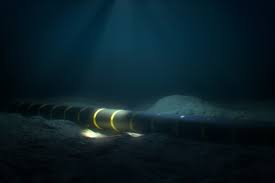A team of researchers from the National Institute for Information and Communications Technology (NICT) and Sumitomo Electric Industries (SEI), together with employees from Eindhoven University of Technology, L’Aquila University and Macquarie University, has developed a 19-core optical fiber with a record high bandwidth. Potentially, it is able to increase the capacity of submarine and other high-capacity networks laid over long distances.
The 19-strand standard sheath diameter fiber (0.125 mm) has the largest number of strands among standard sheath diameter multifilament fibers. The creation of such a fiber became possible due to the optimization of the structure of the strands and their placement, which made it possible to place such a number of strands in a standard sheath diameter while establishing arbitrary connections between the strands (optical signal paths) and reducing differences in propagation characteristics. The fiber has demonstrated the ability to transmit large amounts of information at a data rate of 1.7 Pbps over a distance of 63.5 km.
The team used a random spliced stranded fiber model to achieve a high density of strands, and multiple input/output (MIMO) digital signal processing (DSP) capabilities to eliminate inter-strand interference.
SEI designed and manufactured 19-strand random splice fiber with a standard sheath diameter, while NICT created an optical transmission system to simultaneously receive signals from 19 strands at high symbol rates. The widely used wavelength ranges (C and L) and 64QAM polarization multiplexed signals were used for the experiment.
Macquarie University has provided researchers with a 3D multiplexer and demultiplexer with an embedded laser that can be used as an interface to conventional single-mode optical fibers. The 3D-printed glass chip provides low-loss access to 19 light streams transmitted through the fiber and ensures compatibility with existing transmission equipment.
Dr. Simon Gross of the Macquarie University School of Engineering explains: “We could increase the throughput by using thicker fibers. However, thicker fibers would be less flexible, more brittle, less suitable for use in long-distance cables, and would require extensive refurbishment of the fiber infrastructure. We could also just add more fibers. But each fiber increases the overhead for equipment and budget, and we would need a lot more fibers. Here at Macquarie University, we have created a compact glass chip with a wave pattern engraved by a 3D laser printer. It makes it possible to feed signals into 19 individual residential fibers simultaneously with uniform low loss. Other methods and designs have higher data loss and strand limit. It was interesting for me to work with leading experts in the field of optical fibers from Japan. I hope that we will be able to see the practical application of this technology in submarine cables in the next five to ten years.”
The researchers noted that the speed and distance results achieved prove that MIMO DSP power consumption can be significantly reduced in international systems compared to multimode transmission over fiber. It is expected that the development of this fiber technology will contribute to the development of future long-distance and high-capacity optical communication networks.
Source: https://mediasat.info/
